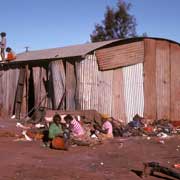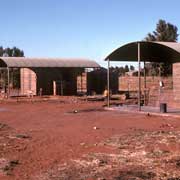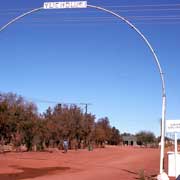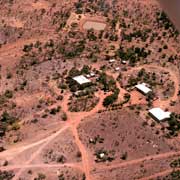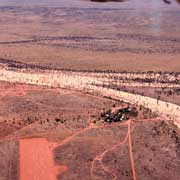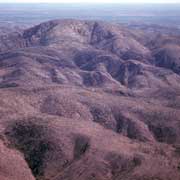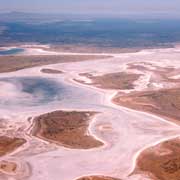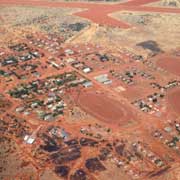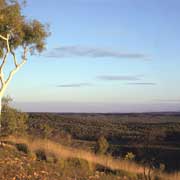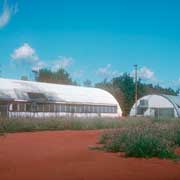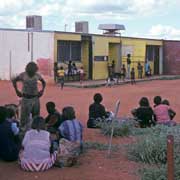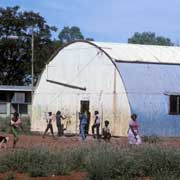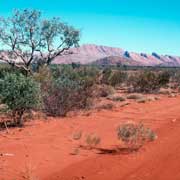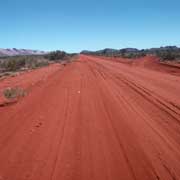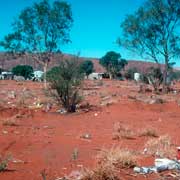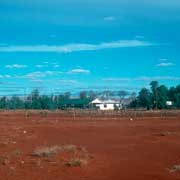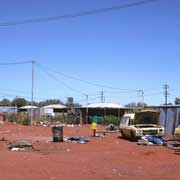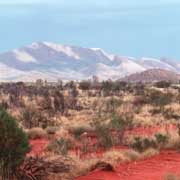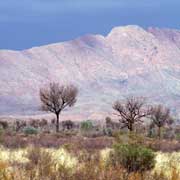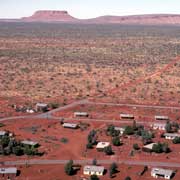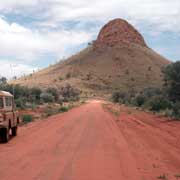Photos of Central Australia - North-west of the Alice
Central Australia - North-west of the Alice
"The Centre", vast and ancient, is a harsh land of red soil and mountains, but with an eerie beauty nonetheless. This is an ancient land, crossed by the dreaming tracks of the Aboriginal inhabitants who live in settlements and small Homeland Centres. These are desert peoples, speaking languages like Warlpiri and Pintupi-Luritja, that, although related, are quite distinct. They share similar customs and ceremonies and travel extensively through this vast land to meet their ceremonial obligations.
you may then send it as a postcard if you wish.
Travelling west from Alice Springs, it is possible to reach Ikuntji (Haasts Bluff) with a sturdy vehicle, preferably four-wheel drive, via the Namatjira Drive past Glen Helen Gorge, traversing the wide landscapes of West MacDonnell National Park. From there a track leads to Papunya, a community of Pintupi and Luritja people, established in the 1950s by the government to house people that had been forced off their traditional lands in the 1930s and initially had been moved into Hermannsburg and Haasts Bluff where there were government ration depots. There were often tragic confrontations between these people, with their nomadic hunter-gathering lifestyle, and the cattlemen who were moving into the country and over-using the limited water supplies of the region for their cattle. Papunya had over a thousand people in the 1970s, living with poor living conditions, health problems, and tensions between various tribal and linguistic groups. Meanwhile an art style (the Papunya School) has emerged here, blending ancient and modern styles, that has now become very well known. As a result of tensions in Papunya, in the 1980s many Pintupi moved around 250 kilometres further west to where their traditional lands were, establishing Walungurru (Kintore) near the Western Australian border. The road passes Mount Liebig, where a small Aboriginal community sits below a 1524 metres high mountain with the same name. All this land is part of Haasts Bluff Aboriginal Land Trust and permits are required to visit.
Further north, taking the Tanami Road leading north west towards the Tanami Desert, is the large community of Yuendumu (or, using the correct Warlpiri spelling, Yurntumu), a community of over 800 people, almost 300 kilometres from Alice Springs; It was established in 1946 by the Native Affairs Branch of the Australian Government to deliver rations and welfare services and a Baptist mission was established there a year later. Nowadays the town has all modern facilities and is home to a thriving community of artists. In the early 1980s began transferring their traditional ochre ground paintings to canvas, and then to the doors of the Yuendumu School, starting an important art movement. This is the heartland of the Warlpiri people, who also live in the small communities and stations around here, and as far as Lajamanu, 600 kilometres to the north. About 160 kilometres south west is the small community of Nyirripi, near Mount Cockburn, and to the north east are stations like Mount Denison, Napperby and, further afield, Willowra. These small, remote places are served by a mail plane from Alice Springs and a flight with these is well worth it for the views on the way.



